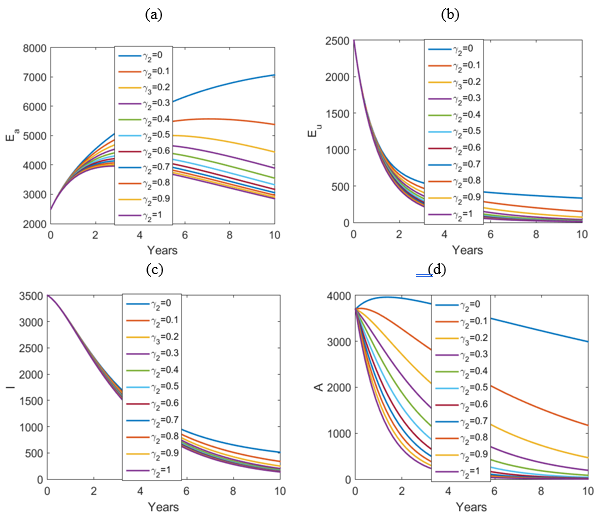Mathematical model analysis on the significance of surveillance and awareness on the transmission dynamics of diphtheria
Keywords:
Mathematical model, Analysis, Surveillance, Transmission, DiphtheriaAbstract
Corynebacterium diphtheriae is a respiratory pathogen. Diphtheria was a major source of disease and mortality, particularly in children under five years of age and those over forty years of age. However, due to the lack of vaccinations, the disease is still widespread in several countries, particularly after the COVID-19 pandemic. In light of the above reason, we propose a deterministic mathematical model to characterize the dynamics of diphtheria transmission, evaluating the effects of awareness and surveillance that other authors have not considered. The boundedness and positivity of the solution have been established. In addition, it has been investigated that if Rc < 1, the model shows a diphtheria-free equilibrium that is stable both locally and globally. According to the theoretical study, there is a distinct positive endemic equilibrium, and the corresponding control reproduction number is greater than one. The endemic equilibrium has also been shown to be globally asymptotically stable when the disease induces mortality, vaccination, booster vaccination, and isolation are zero. Both the diphtheria-free and the endemic equilibrium global stability are numerically justified. Model fitting and parameter estimation are obtained using the least-squares method. Numerical simulation reveals that the development of surveillance and awareness is effective in curtailing the spread of diphtheria infection. Finally, the theoretical and numerical result shows that with surveillance and awareness, the disease can be eradicated in the population in less than ten years.

Published
How to Cite
Issue
Section
Copyright (c) 2025 James Andrawus, Kayode Isaac Omotoso, Agada Apeh Andrew, Felix Yakubu Eguda, Sunday Babuba, Kabiru Garba Ibrahim

This work is licensed under a Creative Commons Attribution 4.0 International License.
How to Cite
Most read articles by the same author(s)
- Felix Yakubu Eguda, Andrawus James, Sunday Babuba, The Solution of a Mathematical Model for Dengue Fever Transmission Using Differential Transformation Method , Journal of the Nigerian Society of Physical Sciences: Volume 1, Issue 3, August 2019
- Danat Nanle Tanko, Farah Aini Abdullah, Majid K. M Ali, Matthew O. Adewole, James Andrawus, Onchocerciasis control via Caputo-Fabrizio fractional dynamics: a focus on early treatment and vector management strategies , Journal of the Nigerian Society of Physical Sciences: Volume 8, Issue 1, February 2026 (In Progress)







